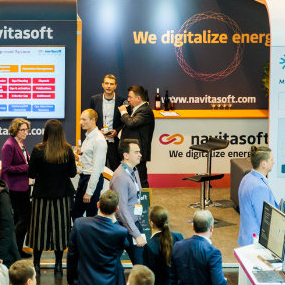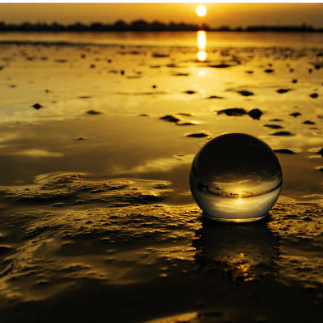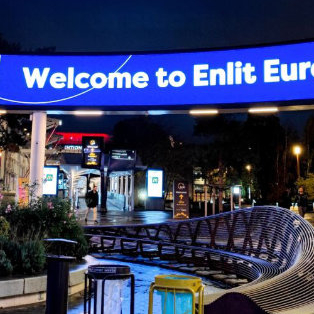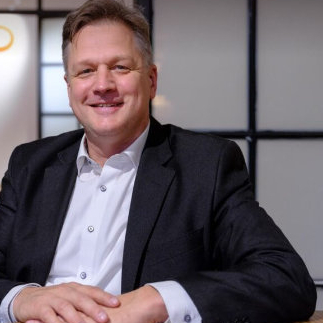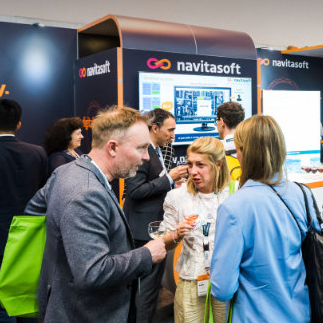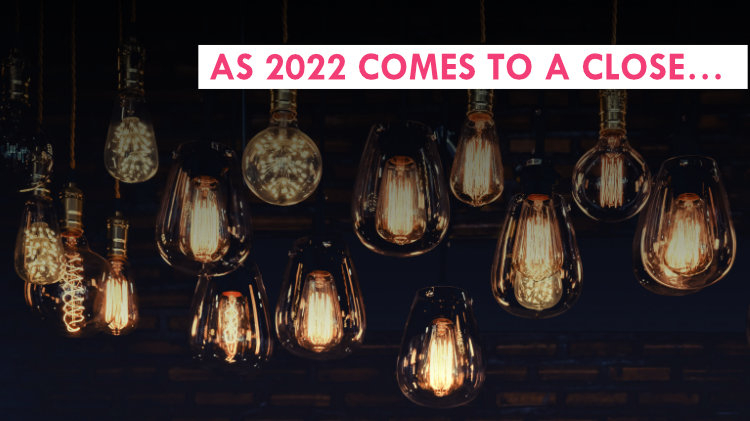
In 2022, the news that dominated the headlines gave us no reason to celebrate. In fact, they triggered many challenges for us and the entire industry. However, behind the major negative headlines there were also many positive things that we do not want to let go unnoticed, as they make us see 2022 in a better light. Let’s take a look back:
The past year was a big one for our company. Firstly, we participated in two industry-wide trade fairs, E-world and Enlit Europe. These events allowed us to showcase our products and services to a wider audience, and we made some valuable connections. The new year started off on a great note, moving to a big new office that allowed us to expand and hire a number of talented people to our team. In addition, our investors trusted us with new seed funding, which helped us to launch the Energy Market of Things, a platform that connects distributed resources to energy markets in a new and innovative way.
In addition to launching new products, we also had some customer milestones in 2022 that fill us with pride. First, we were able to expand into Cyprus and we also managed to acquire our first Irish and Austrian customers. In Austria, we supported the important transition of the Austrian gas market to the latest communication standard AS4. 2022 also had us launching the Hungarian power TSO MAVIR’s new ancillary services platform (RSZIT) and we added two more Elering projects to our portfolio. And, not to be forgotten, despite facing unprecedented challenges in Ukraine, our software and the ancillary services market continued its operation. So overall, 2022 was a busy, but pretty successful year for our whole team.
2022 - A very long year
Our past year really felt like it had more than 365 days, but all the above just happened in our rather small world of Navitasoft - on a bigger scale there was a whole lot more going on, as the whole industry had its fair share of ups and downs.
Beyond the big and negative impacts the industry had to endure, there was also quite a push for progress. With its REPowerEU master plan, the EU tried to make its energy supply future-proof by moving away from oil and natural gas in general and from Russian resources in particular. Cutting its energy ties with Russia, the EU has to find middle-term alternatives, which they are doing by expanding their LNG terminals for exporting LNG from all over the world, especially Qatar, Australia and the US. While these are emergency measures, the big question remains if - or when - the slowly accelerating progress in solar and wind power expansion may or may not make fossil fuel procurement from outside of Europe obsolete.
But meanwhile the energy industry also moved forward with planned modernization measures:
The launch of MARI & PICASSO, for example, was a huge milestone in introducing pan-European balancing markets. On the spot market side, a successful fourth wave go-live of Single Intraday Coupling (SIDC) was achieved by integrating Greece and Slovakia. In late November these two countries joined SIDC, which now has a total of 25 countries connected to intraday trading. The Network Code on Cybersecurity was introduced, which is the answer to a new paradigm of cybersecurity in cross-border electricity flows. The year also had EPEX SPOT launching the pan-European spot market for Guarantees of Origin (GO). Together all these measures are aimed at improving cross-border trading of power and realizing a seamless pan-European power market.
The gas market also saw some major progress with the final go-live of GIPL (Gas Interconnection Poland-Lithuania), a 508-kilometer long gas pipeline connecting Poland and Lithuania, that connected the Baltics to European networks in May. A second pipeline, the Baltic Pipe, also went into operation, which now connects Poland to Denmark and allows transport of gas from Norway to the Danish and Polish markets, as well as from Poland to the Danish market. These developments have great strategic importance, as pipeline expansion makes it easier to move the gas to where it's needed, but it’s also key to increase import capacity. In order to bring in enough LNG to meet Europe's middle-term demand, new floating storage regasification units (FSRUs) were installed, most notably, in Germany, the Netherlands, Greece and Italy. Still, the long-term plan is to also add onshore LNG terminals to increase Europe’s import capacity from 220 billion cubic meters to 285 per year by 2030.
That was quite a lot. But the ball in the energy sector will keep moving, so we hope you stay tuned to all the things that will happen in 2023. We here at Navitasoft also look forward to continuing to grow and innovate in the years to come. Until then, we wish you a successful start in your year 2023!
